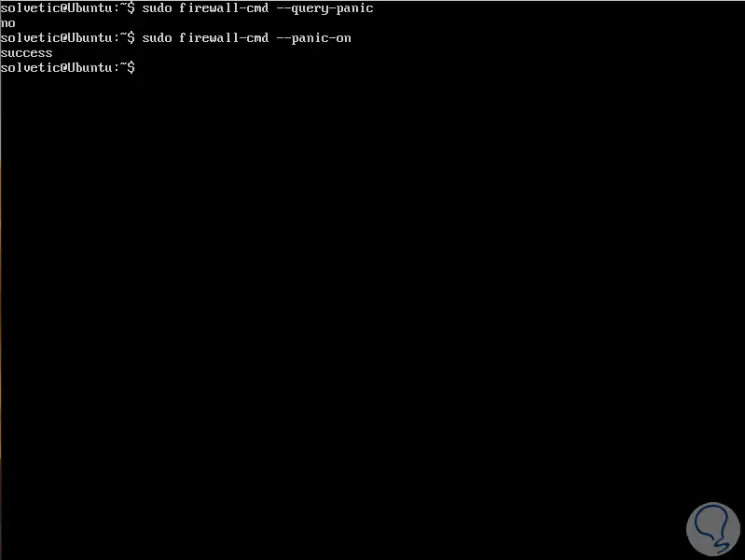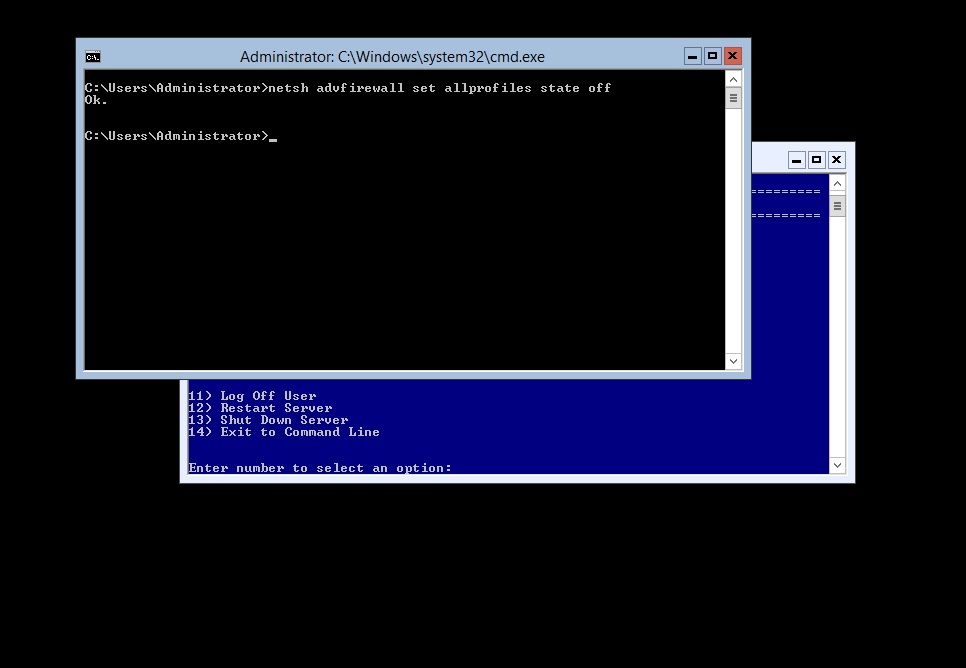


usr/lib/firewalld #Save the default configuration to avoid modifying them. Unless you have a very special configuration, you don’t have to deal with them, you should use firewalld-cmd.
#FIREWALLCMD PANIC MODE INSTALL#
To install a Graphical tool to manage firewall here is the command: yum install firewalld firewall-configįirewalld is configured using XML. There are three main firewalld configuration methods: firewall-config ( graphics tool), firewall-cmd (command-line tool), and direct editing of XML files. The default area of firewalld is public. Only choose to accept incoming network connections. Only choose to accept incoming network connections.Įxternal: Do not trust other computers on the network and would harm your computer. Internal: Trust other computers on the network without harming your computer. Trusted zone ( trusted): All network connections are acceptable.ĭrop: Any incoming network connection is rejected. For isolated areas, only choose to accept incoming network connections. Isolated Area ( DMZ): Also known as the demilitarized area, a layer of the network between the internal and external networks acts as a buffer. Public area ( public): Do not trust any computer on the network, only choose to accept incoming network connections. Home: Tell that other computer on the network will not harm your computer Work: Believe that other computers on the network will not harm your computer The model describes the trust level of the entire network environment to which the host is connected and defines how new connections are handled.īlock: Any incoming network packets will be blocked The network security model can choose to initialize during installation, initial startup, and network connection for the first time. Let’s talk a little bit more above the network environment:īy dividing the network into different areas, an access control strategy between different areas is developed to control the flow of data between different program areas.įor example, the Internet is an untrustworthy area, while the internal network is a highly trusted area. zone #Used to specific networking environments public, private or local permanent #Permanently effective, no failure after restarting this parameter Just like TCP ports, we can open UDP port for public access using the below command:įirewall-cmd –zone=public –add-port=443/udp –permanentĬommand meaning: -add-port=80/tcp #Add port, this is used to specify which port/communication protocol has to open In the same way, we can open any port, just what you have to do replace the port number in the above command with the one you want to open. Here are commands that one can use to open some common ports on CentOS Linux server firewall-cmd -zone=public -add-port=22/tcp -permanent firewall-cmd -zone=public -add-port=80/tcp -permanent firewall-cmd -zone=public -add-port=443/tcp -permanent firewall-cmd -zone=public -add-port=3306/tcp -permanent systemctl stop firewalld # Stop the service systemctl disable firewalld #disable the firewall firewall-cmd -state #View the running status firewall-cmd -zone=public -list-ports #View open portĬommands to open the daily port of the website on CentOS Linux systemctl start firewalld # to start the FirewallD service on the system systemctl restart firewalld # For restarting the service systemctl enable firewalld #to enable it at boot level, thus it automatically start when a system booted up. sudo yum install firewalldĪll command need a root or sudo rights user. If your CentOS doesn’t have firewalld then you can install it using the below commands and then enable + start the same. It is not a replacement for iptables, although the iptables command can still be used for firewalld, it is recommended to use only the firewalld command for firewalld. Only the results of firewalld and iptables and the method of use are different!įirewalld is a wrapper for iptables that makes it easier to manage iptables rules. That is to say, Firewalld is the same as iptables, their role is to maintain the rules, and the real use of the rules is the kernel’s Netfilter. Firewalld itself does not have the function of a firewall, but like iptables need to be implemented through the kernel’s Netfilter. And iptables is allowed by default, and you need to reject it to limit it.Ĥ. Firewalld default is rejected, you need to set it later to release. Firewalld uses regions and services instead of chained rules.ģ. Whereas in iptables, after modifying the rules, it must be fully refreshed to take effect.Ģ. Firewalld can dynamically modify a single rule or manage the ruleset, allowing updates to the rules without breaking existing sessions and connections. Use with the service Comparison of Firewalld and iptables:ġ.


 0 kommentar(er)
0 kommentar(er)
